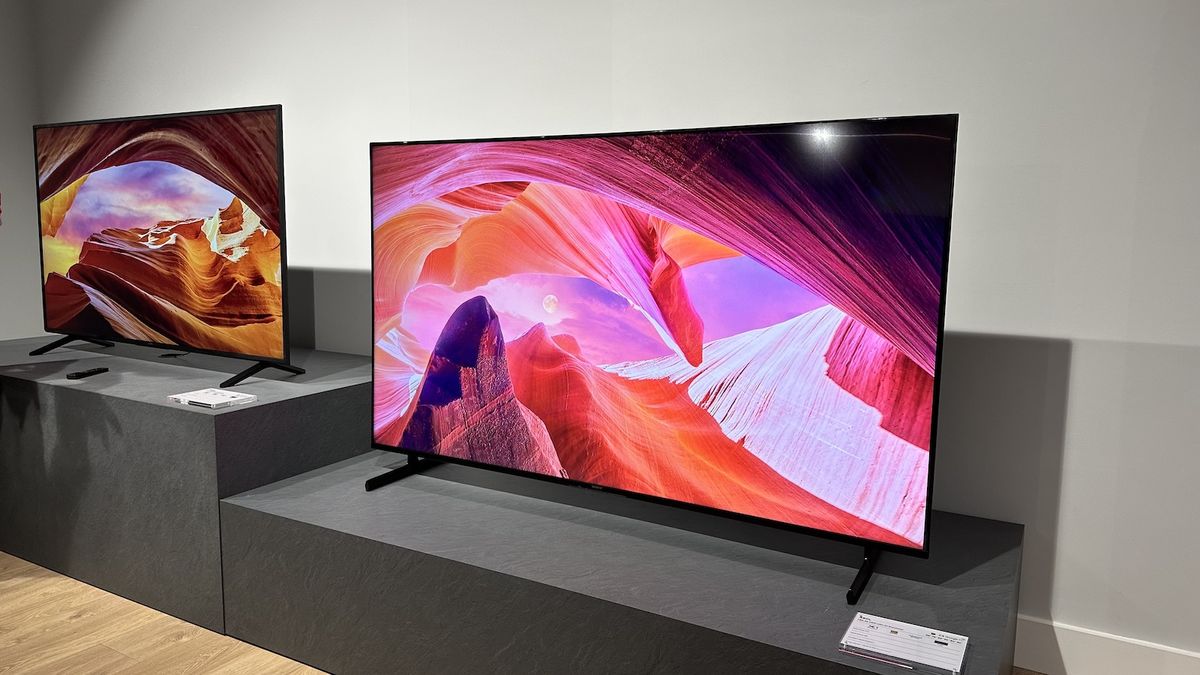I’ve sampled 2023’s top OLED TVs – and they all could take a note from Sony
It’s 2023, why are OLED TVs still struggling to deal with motion handling?

It has already been a big year in the world of OLED TVs, which has been headlined by one big grudge match – Micro Lens Array (MLA) vs Quantum Dot OLED (QD-OLED).
The battle is interesting based on our experience reviewing the MLA-powered LG G3 and QD-OLED-toting Samsung S95C, which both have one common goal – radically improving the max brightness levels possible on an OLED set.
But, during our ongoing What Hi-Fi? Awards 2023 testing, as with my epiphany around the importance of colour temperature last week, the process left me mulling a key metric for picture quality. Specifically, motion handling.
Now, motion handling is not the most talked about metric in most TV makers’ marketing at the moment. I reckon this is because it doesn’t let companies throw a big number at buyers in the way that “2000 nit max brightness” does. But, motion handling is still very important.
To catch up anyone out of the loop, motion handling, or motion processing as it is sometimes called, determines how a TV deals with moving parts of the picture – hence the name. When it’s done drastically wrong it can completely destroy your movie, TV or sports watching experience.
The motion smoothing mode common to many TVs is a good example of this. This is a setting designed to reduce judder and blur that in most cases works by inserting artificial frames between actual movie frames.
Fun fact, most TVs run at either 50 or 60Hz, though many modern sets can go as high as 120Hz, but movies are generally mastered at 24Hz.
Get the What Hi-Fi? Newsletter
The latest hi-fi, home cinema and tech news, reviews, buying advice and deals, direct to your inbox.
The issue is that the mode makes movies run at higher frame rates than they were shot, potentially creating what is known as “the soap opera effect” where movements look artificial.
In more subtle situations, such as director modes that turn off most processing settings, including motion smoothing, it can still have an impact if done wrong. Key issues related to poor motion handling can include flickering, a loss of detail, over-smoothing, or judder during fast-moving scenes.
The reason I flag this now is that, to date, while most flagships are still very good, Sony is simply better at it based on my experience testing TVs this year.
Most recently this became apparent during our awards testing where we ran a number of sets against the Sony A80L, which sits in the middle of the company’s 2023 OLED library, just behind the Sony A95L – which we’re hoping to get into our test rooms in the near future.
Like most of the modern Sony sets I've seen, the A80L’s brilliant motion handling made movement in all our checks look more natural and added a layer of immersion that was missing on many of the rivals we threw it against. Watching the opening of Blade Runner 2049, the fight scene carried a heft and level of detail that was completely judder-free and natural.
The reason Sony sets manage this is that they never go too far in one direction with their processing.
This is a big sell for the sets as even at the top end of the market this isn’t always the case. For example, jump over to our Samsung S95C review and you’ll see that, while good, it’s not perfect. In the movie preset the processing was overly aggressive and would occasionally oversmooth.
Jumping to the other extreme in Filmmaker mode, while more authentic looking, judder did occasionally creep in that didn’t appear on the Sony. The same is true of the LG G3 which, while great – as our TV head honcho noted in his review – still doesn’t match the Sony for naturalness during particularly challenging scenes.
Does that make Sony the best of the best? No, it's not perfect and other sets beat it in some areas, such as colour accuracy and audio quality. But it is a great example of why companies shouldn't push motion handling to the background in the pursuit of getting the big numbers for marketing purposes.
And that’s why I can’t help but wish that in the future TV makers will spend an equal amount of time focussing on motion handling as they currently do on max brightness.
MORE:
These are the best OLED TVs we can personally recommend
Check our curated picks of the best 65-inch TVs
Don't forget to upgrade your TV with a soundbar. These are the best Dolby Atmos soundbars we've reviewed

Alastair is What Hi-Fi?’s editor in chief. He has well over a decade’s experience as a journalist working in both B2C and B2B press. During this time he’s covered everything from the launch of the first Amazon Echo to government cyber security policy. Prior to joining What Hi-Fi? he served as Trusted Reviews’ editor-in-chief. Outside of tech, he has a Masters from King’s College London in Ethics and the Philosophy of Religion, is an enthusiastic, but untalented, guitar player and runs a webcomic in his spare time.